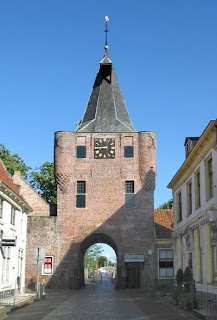orchestral evolution
It used to be a safe bet. Good grades at the conservatory, a brush up of orchestral scores, an audition without too many nerves, and bingo, set for life, a job in the chairs of one of the world’s major orchestras. Tenure tracked it was, and playing chamber music or teaching at a nearby conservatory made for a sweet and safe financial foundation, a security for classical musicians as yet unknown.
Are those days gone for good?
As more and more orchestras find themselves knee deep in poverty due to subsidy cut backs (at least in Europe), rising union demands (certainly in the states), dwindling ticket sales (everywhere) and expectancies of sponsor dips as Wall Street banks go into meltdown, the security of an orchestral gig is fading away. Two evolutionary reactions are possible here: gloom and doom, or a rethink. For that first, there are examples galore; for the second, a few role models.
A rethink of the financial organization of an orchestra was made very early on by the London Symphony Orchestra in particular, and the English in general. Unlike Stateside or on the continent, LSO has been a cooperative throughout its 103 year history. No play means no pay, but if you do play, and help program or teach or get involved in a creative community arts plan, the pay is the highest in the UK capital, and the audience is actually growing!
As is the conducting talent the LSO attracts and the press it generates. Many an eyebrow was raised as they made considerable money with their film and pop music gigs, yet they unselfconsciously boast a ’global audience of millions’ via blockbuster movies like The Queen, Star Wars or the Harry Potter series. ‘LSO Live is the best-selling orchestral owned label in the world’. These musicians are not even above making and selling ringtones!
Last century, the ‘authentics’ and the ‘contemporaries’ also established cooperatives, foundations to accommodate their living apart together relationships: individual instrumentalists who gathered a few times a season to rehearse intensely and then take a particular program on the road, afterwards going their separate ways into other employment . Frans Bruggen’s Orchestra of the 18th Century, or the ASKO-Schöenberg Ensemble still work in this way. On occasion certainly subsidized, as is the LSO, but art funding never covers their production costs, and there is certainly nothing left over for investments like those considerable efforts LSO makes for future talent and public at their inspiring St. Luke’s.
Nowadays, perhaps the best example of orchestral evolution is not so much a cooperative, as a near dictatorial and dedicated ensemble of instrumentalists: the Budapest Festival Orchestra. Maestro Ivan Fisher’s hand -picked and trained group has taken the world by storm with its enticing programs and inspired recordings. ‘The whole philosophy is different from any orchestra I know’, states Fisher in a recent interview in the Guardian: ‘There is no job security, no union, and no limits to how much we can rehearse and work.’ Founded in 1983, ‘it’s an orchestra for artists who relish very intensive rehearsal work’.
Ah, so they don’t drop their violins the minute the clock strikes the hour? How refreshing. You would think that musicians take their work differently than, say , postal workers, or civil servants…Fisher’s club is evidence that some of them indeed do. Maestro insists on section rehearsals to know a piece backwards before full orchestral rehearsals even commence. Fisher refers to it all as ‘doing the laundry’, ‘nobody has the arrogance to say it’s a bad idea. We have this joke that we start to work on a level where some orchestras end up.’
LSO Principal Conductor Valery Gergiev has made a career out of challenging the whole tradition of orchestral rehearsal , showing up too late at union dictated schedules, and exasperatingly pleading for more time and flexibility when he- inevitably- then runs out of time. He once claimed that the ideal situation would be for his musicians to have a house next to the concert hall, and wait there for all rehearsals to convene as he saw fit; actually this is more or less the situation and working conditions he has created for himself back home at the Mariinsky in St. Petersburg.
But at the LSO, where musicians will certainly not sit waiting for his arrival, Gergiev has found an ensemble willing to go the extra unscheduled mile, real ‘soldiers for music’ he proudly insists, who are willing to follow him, for example, through the complete Prokofiev symphonies in just three intensive days.
Great role models these in days of orchestral evolution, as different personally as chalk and cheese: the one with a genius for the spontaneous, and the other, Fisher of course, a perfectionist. Now, the survival of the fittest for this 18th century ensemble type will prove what works best in the long run.
Listen to the Budapest Festival Orchestra on Channel Classics, a company, albeit small, who, like Fisher, does not take imperfection for an answer:
And LSO recordings can be found via their own website.



